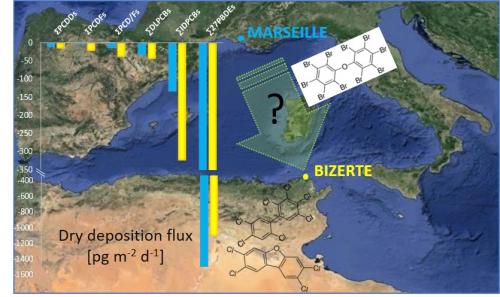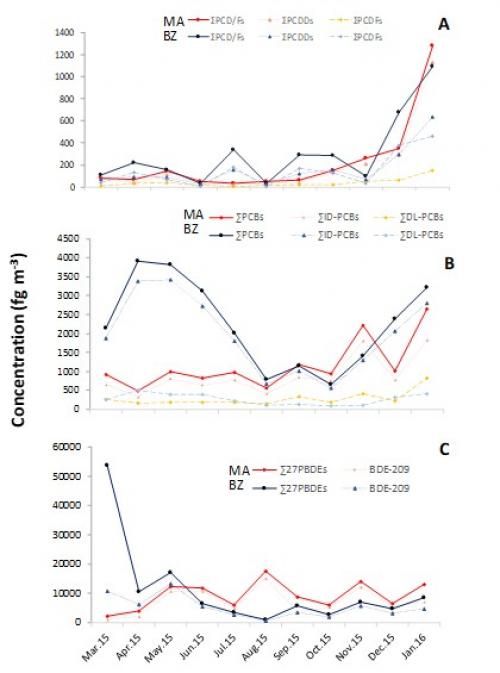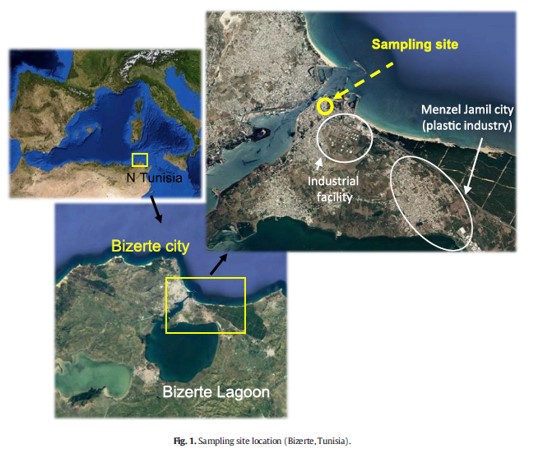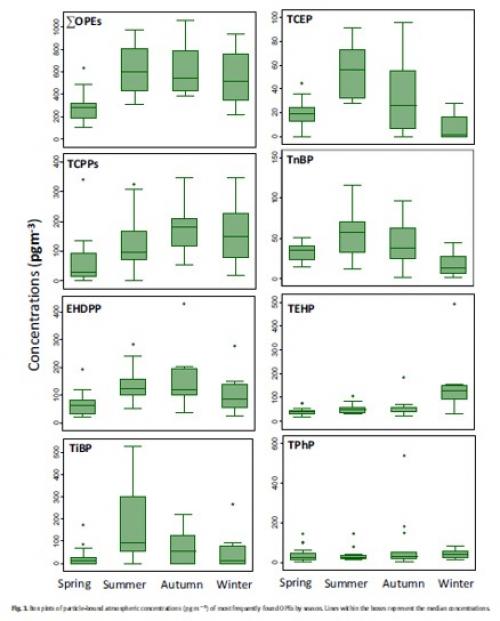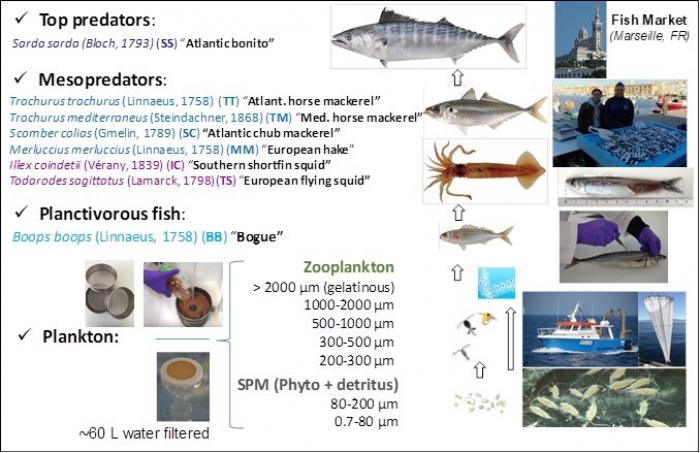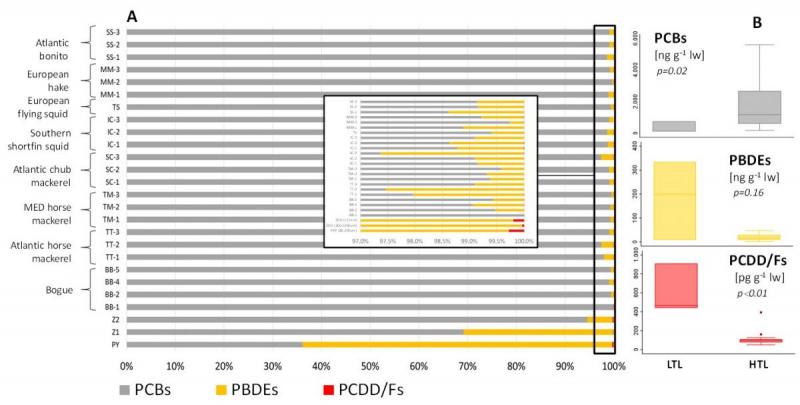Richard Sempéré, Javier Castro Jiménez (MIO)
Henri Wortham (LCE)
The Mediterranean Sea is under a strong anthropogenic pressure (e.g. industrial, urban, agriculture, intense maritime traffic, etc.) and some areas are highly impacted by persistent organic pollutants (POPs) and related chemicals. The objective of this ptoject is to perform an integrated assessment of the fate and impacts of selected legacy persistent organic pollutants (POPs) and new organic contaminants of concern in Mediterranean coastal sites. It also ntends to generate data on POPs levels and their environmental behavior in areas from the Mediterranean Sea where little or no information exists such as the Mediterranean African coast, enabling contamination status assessments and comparison with Mediterranean European coasts.
The selected contaminants included various families of persistent organic pollutants (POPs) such as PCBs, organochlorine pesticides, dioxins and furans (PCDD/Fs), PBDEs and the emerging organophosphorus esters (OPEs) flame retardants and plasticizers are indicators of past and current anthropogenic activities at basin scale. They cover a wide range of physical-chemical properties and can be used as surrogates (i.e. model chemicals) of the environmental behavior of other semi-volatile and hydrophobic organic contaminants.
The major scientific questions are:
(1) what are the main drivers of the fate, transport and loading of organic contaminants in Mediterranean coastal sites at present?
(2) what are the bioaccumulation and foodweb transfer of organic contaminants in representative Mediterranean trophic chains and the main potential impacts and environmental risks?
Study 1
A comparative study for 62 toxic chemicals from aerosol samples in two coastal cities at both the African and European edges of the NW Mediterranean basin (Bizerte, Tunisia and Marseille, France) showed that:
- Legacy polychlorinated biphenyls (Σ18PCBs) and polychlorinated dibenzo-p-dioxins and dibenzofurans (Σ17PCDD/Fs) median concentrations are about twice as high at the African edge than at the European edge.
- In contrast, the “emerging” polybrominated diphenyl ethers (Σ27PBDEs) median concentrations were 1 ½ times higher
- A “jumping” of the PBDE local atmospheric stocks from the Northwestern European Mediterranean edge to theNorthwestern African coast seems to be possible under favorable conditions at present
- The inhalation exposure assessment points to a minimum risk for human health at both sites.
|
Source: Castro-Jiménez. 2017 Environ. Sci. Technol. 51, 13180–13189 |
Temporal variability of PCDD/F (A), PCB (B) and PBDE (C) concentrations in atmospheric |
Study 2
The atmospheric occurrence and deposition of other legacy and emerging organic contaminants have been monitored at the NW African Mediterranean coast (in Bizerte) during one year in collaboration with the LMI COSYS-Med. Polycyclic aromatic hydrocarbons (PAHs), organochlorine pesticides (OCPs), and the new organophosphate esters (OPEs) flame retardants and plasticizers have been studied:
- OPE were measured for the first time in the aerosols of this Mediterranean region, with an estimated atmospheric input 1-3 orders of magnitude higher than that of PBDEs (OPEs “predecessors”), and even higher compared to other legacy POPs like PCDD/Fs, PCBs and organochlorine pesticides (OCPs).
- the atmospheric dry deposition fluxes of OPEs are in the lower end of those reported for PAHs.
- more than 150 kg.y-1 of toxic organic compounds can be loaded to Bizerte Lagoon (the most important aquaculture area in Tunisia) from the atmosphere.
|
Source: Castro-Jiménez. 2018 Sci. Total Environ. 642, 383-393
|
Study 3
The storage capacity, trophic magnification and risk of a cocktail of 62 POPs have been evaluated in a well-characterized pelagic food web (11 trophic levels) from an impacted area in NW Mediterranean Sea, showing:
- Plankton displayed a high capacity to store PBDEs and PCDD/Fs.
- In contrast, PCBs were preferentially bioaccumulated in the higher trophic levels (6 fish species and 2 cephalopods).
- Atlantic bonito (S. sarda) and chub mackerel (S. colias) not only bioaccumulated the highest concentrations of POPs, but also showed the highest toxic potential, and our risk assessment pointed to a potential risk for humans consuming these commercial species. No risk evidence was found due to consumption of all other edible species studied.
- The integrated burden of POPs in the food web reached ~ 18 µg g-1 lw, representing a dynamic stock of toxic organic chemicals in the study area.
- The characterized food web could be a useful and comprehensive ‘bioindicator’ of the chemical pollution status of the study area.
Pelagic food web studied in NW coastal Mediterranean
POPs relative burden in the food web (A) and box plots (B) of the lipid normalized total concentrations of sumPCBs, sumPBDEs (ng g-1 lw) and sumPCDD/Fs (pg g-1 lw) in the lowest trophic levels (LTL) considered as the planktonic compartment for the purpose of this comparison (i.e. PY=phytoplankton 0.7-200 µm, Z1=zooplankton 200-1000 µm and Z2=zooplankton > 2000 µm, n=3) and the higher trophic levels (HTL) considered as the other organisms from the food web (fishes and cephalopods, n=22) Kruskal-Wallis test p-value.
(Castro-Jiménez et al., Submitted to Environmental Science and Tehcnology)



